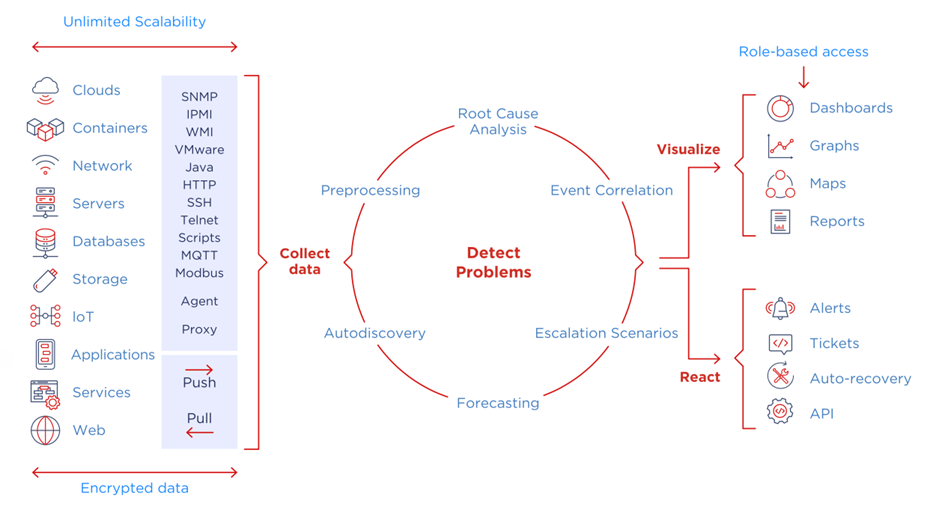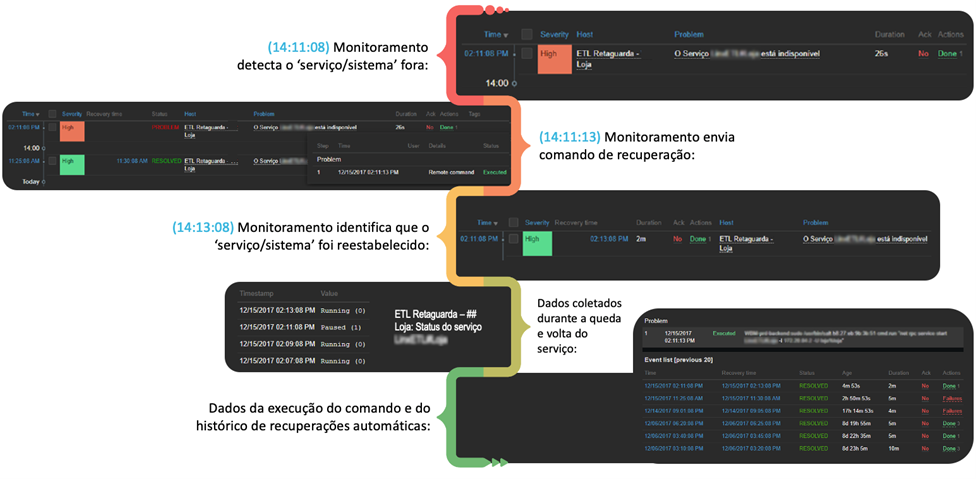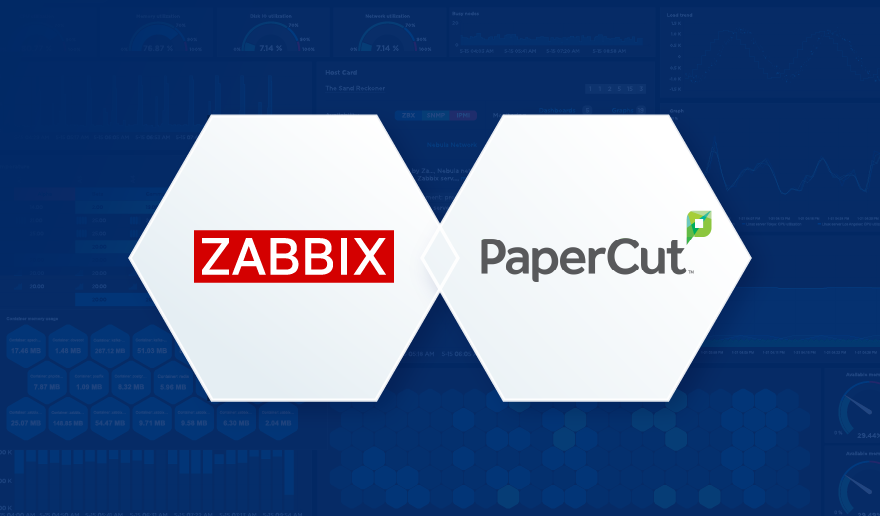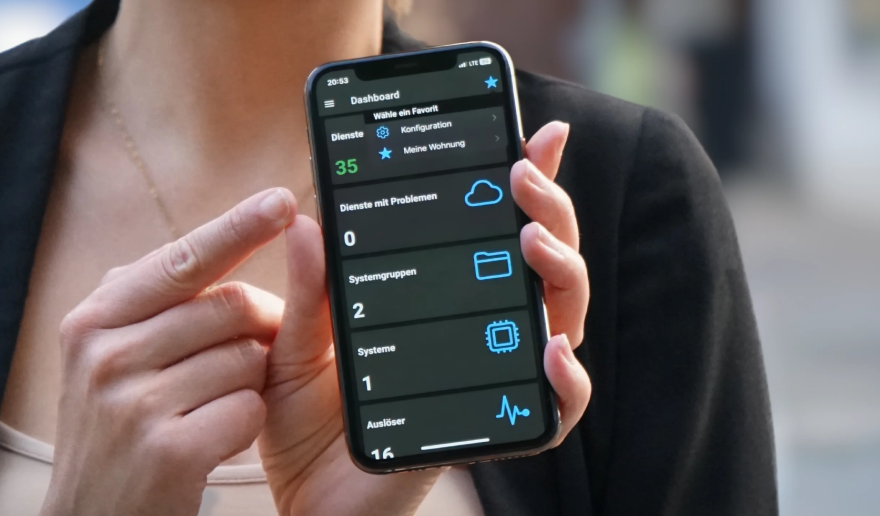When retail needs involve monitoring diverse and complex environments, with digital and physical operations, the tool chosen to meet those needs must be versatile, scalable and capable of collecting and analyzing data to generate insights for managers and support decision-making.
With this in mind, Unirede – a Zabbix Premium Partner – developed a use case consisting of monitoring a client in the retail segment, using Zabbix as the main tool for data collection, consolidation and event management.
The result: a reduction of up to 70% in operational costs and other benefits related to data-based decision-making, following the data driven concept and automation at the technological environment level for rapid responses to incidents.
Continue reading to understand, in detail, how monitoring can support retail needs, based on this case of success.
Retail needs
Currently, stores and brands that offer an omnichannel experience are standing out in the market. This means that they are available 24 hours a day, 7 days a week, not only in physical spaces (such as the stores themselves), but also digitally (through e-commerce and mobile app operations). These retailers also have critical operations in distribution centers that operate without interruption.
As a result, the environment to be monitored becomes what we call phygital – both physical and digital, at the same time. This is a concept the origins of which are closely linked to the Internet and global digitalization.
With this, customers can choose to buy from home, on their cell phone, wherever they are. However, if necessary, they can find the support they need in physical stores, with the same rules and prices across all channels.
Therefore, retailers need to ensure that the operation is able to deliver, full-time, a consistent customer experience on any channel, mitigating or preventing unavailability and loss of service performance. Additionally, they need to provide support to requests for help that may arise from managers who are responsible for the company’s results.
And this is not limited to just one type of retail. Segments such as supermarkets, fast fashion, specialists, fast food and pharmaceutical, among others, can benefit from data monitoring to improve the work carried out in activities such as:
- Understanding the purchasing journey of omnibuyer customers (on-line/off-line):
- Complete monitoring of user experience;
- Maximizing the operation of distribution centers;
- Monitoring points of sale (POS);
- Developing technical and executive dashboards with the main KPIs of the business;
- Reports with information for making decisions in real time.
So, through monitoring with Zabbix, it is possible to collect data from different points, organize these data as information in visual dashboards and generate knowledge to improve internal and external customer service from end to end.
How monitoring with Zabbix works
We talk about the benefits and needs regarding retailers, but we also need to explain how monitoring with Zabbix works in this type of environment.
Beginning with the basics: Zabbix collects, categorizes, analyzes and generates information from data.
This process divided into 4 stages:
- Data collection;
- Problem detection;
- Visualization;
- Reaction.

In the first stage, Zabbix captures data from different sources, which can be cloud systems, containers, networks, servers, databases, APIs, stocks, payment methods, applications, services and the Internet of Things. At this stage, there is a lot of flexibility in the tool itself, and it is also possible to create completely customized collection methods.
The data are encrypted, as Zabbix follows the premise of Security by Design, and they are analyzed in a processing stage to detect possible problems or behaviors that the business wants to be detected.
At this stage, data processing categorizes information into events by severity, indicates the root cause of the potential problem or anomaly, correlates these events based on predefinitions established by system administrators or business managers, begins self-remediation of this problem, and creates predictions based on metrics behaviors so that the business is ready and prepared to deal with events that have not yet occurred.
Afterwards, the information generated is allocated to dashboards for better visualization and, consequently, administrators choose how to react to what is shown.
Reactions can take the form of alerts via message, e-mail and applications, by generating tickets to the support team, by establishing a connection to other applications and systems, and by automating problem solving – or self-healing.
Main on-line and off-line retail indicators
By monitoring systems and the main resources of the retail environment, in addition to ensuring better availability and performance, it is possible to extract critical indicators for your business in real time.
There are indicators that are found both in physical and digital retail operations. With Zabbix, it is possible to collect and measure each one of these indicators, such as:
- Gross sales;
- Average ticket;
- Sales by product category;
- Sales by payment method;
- Number of sales;
- Accumulated sales in a given period;
- Inventory value;
- Sales by M2;
- Sales by collaborator;
- Year-over-Year Sales (YoY);
- Goals achieved;
- Conversion rate (from visitor to customer);
- Traffic origin channels;
- Time spent in e-commerce;
- New visitors vs. returning visitors;
- Cart abandonment.
By analyzing the elements mentioned above, also through monitoring, it is possible to understand how the performance of on-line sales is compared to off-line sales, helping business owners to make a decision on which of the means – or all of them – should receive more or less investments to generate more revenue.
We mentioned automating manual processes not long ago.
In retail, this can happen with the discovery of events and the indication of root causes, such as identifying the unavailability of a service or component that impacts the proper operation of a given system and, based on rules defined in Zabbix, triggering a self-recovery command, without human intervention, as in the following example:

What are the benefits of monitoring for retailers?
How can monitoring become essential for the digital transformation of retailers?
In order to do this, we need to understand the benefits of collecting and analyzing data with Zabbix.
The first and most objective one is the monitoring of support services, both in physical and digital operations. Here, we are talking about networks, connections, and IT infrastructure in general.
But there is also monitoring distribution centers in order to optimize supply chains, and capturing data from stores, points of sale, data centers and clouds.
With this duly adjusted, we move on to how the monitoring and sustainment of basic services helps retailers to have a better view of environments, analyzing performance indicators in real time and managing SLAs.
The result of a monitoring system with Zabbix in retail is having operations focused on customer experience, ensuring cost reductions and gains in operational efficiency.
Lessons learned from retailer monitoring
With so many possibilities and advantages resulting from using Zabbix in retail, it is difficult to choose where to start.
We need to bear in mind that, when implementing Zabbix in this area, it is important to focus on what is essential, that is, monitoring only what is necessary, instead of monitoring data that will not result in any type of action or analysis in case of an event. Avoid standard templates without the necessary adjustments to meet the specificities of your environment and the analysis practices your business requires..
Automating as much as possible is also a crucial practice, as it allows the team to dedicate more time to strategic activities in the area, thus spending less time dealing with incidents and adding new hosts.
And, of course, even if it is possible to have an integration with other tools, it is worth carrying out a thorough review of existing monitoring efforts in other tools to avoid generating events that are irrelevant, that is, that do not require any type of action by the team. This approach ensures that integration is smooth and does not compromise the effectiveness of the system and operations by generating excessive or unnecessary events.
Last but not least: it is important to recognize the essential and crucial role of the people who use the tool. They not only operate Zabbix, but also play an active role in the development and continuous evolution of business monitoring efforts.
By giving these users a voice and promoting training sessions, your company can invest in more meaningful collaborations, contributing to the continuous adaptation of Zabbix to the specific needs of the retail segment.
About Unirede
Unirede is a technology company, with roots in the State of Rio Grande do Sul and headquartered in Porto Alegre. It was created in 1999 and is dedicated to provide its clients with effective consulting services to improve business performance. Its activities aim to increase productivity, minimize downtime and drive the integration of technological innovations through managed services.
With a philosophy centered on simplicity, Unirede focuses on human relationships, both internally and with clients. There is a conscious effort to not only provide services, but also to establish relationships, favoring the delivery of intelligent solutions that add value to clients.
Unirede has achieved a level of excellence and commitment to results that has resulted in the establishment of strategic partnerships with technology market leaders. It stands out as the first Zabbix Premium Partner in Latin America, since 2008, and was the first Zabbix Training Partner in the world, in 2012.
➜ Find out more about the Official Zabbix Partner Program.







 Prev Post
Prev Post 




